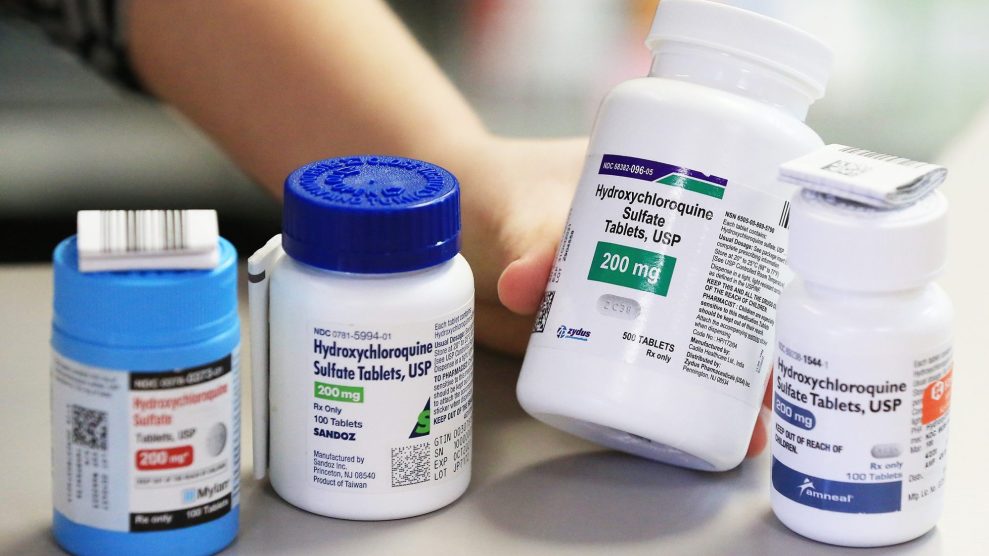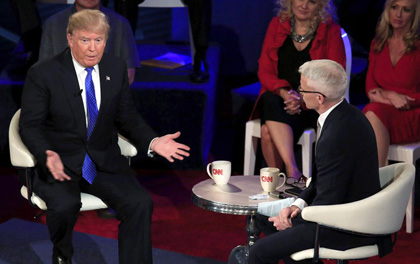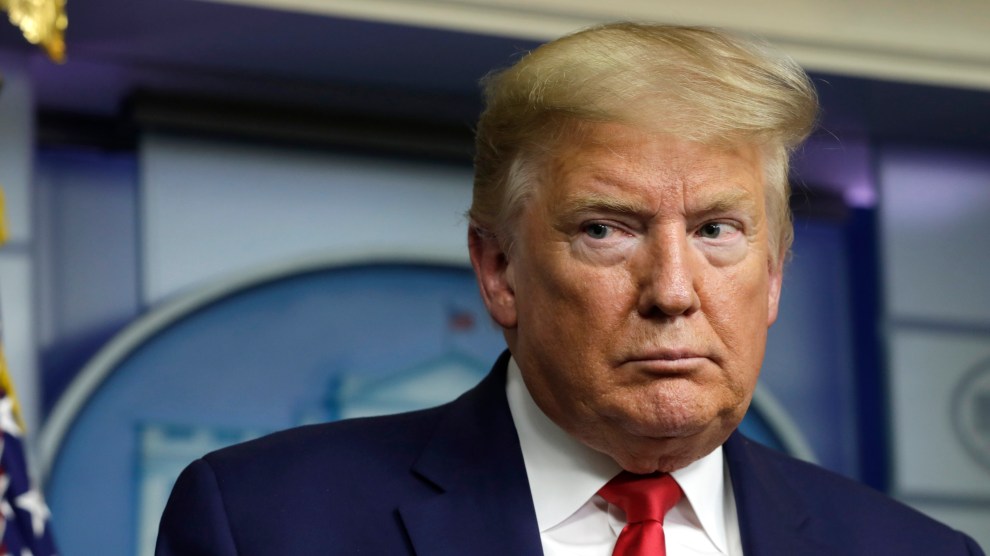
A variety of manufacturers providing hydroxychloroquine.Kevin E. Schmidt/Zuma
For weeks, President Trump has touted the anti-malarial drug hydroxychloroquine (HCQ) as an effective treatment for COVID-19, which has killed nearly 36,000 Americans and infected more than 680,000. On Tuesday this week, the president referred to HCQ, typically used to treat patients with auto-immune disorders like lupus, as “pretty amazing…I haven’t heard a bad story.” In fact, the president hasn’t ruled out an HCQ regiment for himself. During an April 5 press conference, he said, “I may take it. And I’ll have to ask my doctors about that, but I may take it.”
The medical community is more circumspect. The validity of two recent studies by a French doctor touting its effectiveness against COVID-19 with 42 and 80 patients, respectively, has been questioned by the medical community for a lack of objective requirements met by the studies; in one, the doctor broke norms by hand-picking the control group, and the second lacked a control group entirely. Another study, in Brazil, used HCQ and a related drug, chloroquine, on COVID-19 patients. At strong doses, both are known to cause heart arrhythmias, and after 11 patients on a high-level chloroquine regimen died, the study was discontinued. Another French study simply found it to be ineffective.
Nonetheless, many doctors have used the drug when it seems as if options for patients were running out. Anecdotally, some physicians in the United States and abroad have acknowledged some success in using HCQ in the fight against the coronavirus. Under pressure from the Trump administration, the Food and Drug Administration and Department of Health and Human Services have passed measures to ramp up its use in hospitals—and several clinical trials are simultaneously underway to determine HCQ’s efficacy.
To better understand HCQ, its origins, and its potential risks, I spoke to Dr. Remington Nevin, a Vermont-based doctor who runs the Quinism Foundation, which advocates greater awareness of the neurological risks tied to quinoline, the broader category of drugs that HCQ falls under. Before establishing the foundation, Dr. Nevin spent 14 years in the military as an epidemiologist, where he saw the effects of another quinoline, mefloquine, an anti-malarial that was regularly administered to soldiers, some of whom sued the military for debilitating side effects. Service members reported insomnia, anxiety, dizziness, vertigo, and paranoia—symptoms concerning enough that the military largely ended its use of the drug in 2009. In 2013, the FDA placed a “black box warning”—its strongest advisory—on use of the mefloquine.
The following interview has been edited for length and clarity.
Could you walk me through the origins of these drugs?
Drugs of this class, quinoline, are among the oldest drugs still in use in medicine. Quinine, the prototypical drug of this class, is a naturally occurring substance found in the bark of the cinchona tree, which was first discovered many centuries ago in South America. The anti-malarial properties of cinchona became widely known early on. This drug, and its anti-malaria properties, essentially permitted European colonization of Africa—and to a lesser extent, Asia and South East Asia. The gin and tonic was once used medicinally by British troops to protect them to a certain degree from malaria.
In the United States, we have used quinine since Revolutionary War days. As the Second World War was approaching in the late 1930s and as our military was anticipating the possibility of significant land battles in the South Pacific, we become aware of an imminent shortage of quinine because Cinchona plantations were effectively under quarantine by the Axis powers, in Java. Then began a search for synthetic alternatives that we could prescribe to our troops in event of war in the South Pacific. We settled on a particularly toxic alternative to quinine, called quinacrine.
The drug’s toxic properties were very well known to senior military leadership at the time, but it was felt that we had no choice but to use this drug because if we didn’t, it would mean the certain deaths of thousands, if not tens of thousands of troops to malaria, if fighting began in the South Pacific. As the conflict began, the US undertook an extraordinary effort to search for superior synthetic alternatives to quinine, particularly quinacrine. That effort lead to the discovery of—or I should say rediscovery—of chloroquine. Chloroquine had been first synthesized by the Germans in the 1930s. But after some initial human clinical testing, it was deemed too toxic for human use. For whatever reason, the US military decided to further its development of chloroquine and ultimately found it to be superior to quinacrine.
Quinoline-class drugs all share a tendency to cause neuropsychiatric effects that are referable to specific parts of the brain and brain stem. With quinacrine, we knew early on that this drug could cause a severe psychosis—a delusional, paranoid psychosis in troops taking the drug. In World War II, this information was deemed restricted, subject to controls on its dissemination. It was only after war that we saw the publication of some truly extraordinary papers that described just how commonly quinacrine caused mild, moderate and severe psychiatric symptoms in our deployed troops.
The FDA recently approved the both chloroquine and hydroxychloroquine (HCQ) for use to treat COVID-19. What’s the difference between them?
Chloroquine was recognized early on as being fairly poorly tolerated at the doses needed to treat malaria—it was seen to cause symptoms such as dizziness, vertigo, and acute changes in vision—so a search was underway to find a better-tolerated version of chloroquine, and that resulted in the synthesis in 1950 of HCQ.
It was tested in the fruit plantations of the Americas, and was generally found to have reasonable anti-malarial activity, but ultimately it was decided that HCQ was not well suited for use as an anti-malarial, and that chloroquine would continue in use as the anti-malarial drug of choice.
During the Second World War, some troops known to have rheumatological and dermatological problems—that we know today are hallmarks of autoimmune disease—actually saw their conditions get somewhat better as a result of being on quinacrine prophylaxis. So the rheumatological community adopted the use of quinacrine in the years following the war. But it was recognized to cause the same neuropsychiatric problems that marred its use as an anti-malarial.
When HCQ became available, as a supposedly better tolerated form of chloroquine, it was explored for use in autoimmune diseases. It found quite a niche there and has been a mainstay of therapy for many rumotoulogical conditions since its licensing in 1955. But it’s important to note that HCQ, at the time of its licensing, was never subjected to the type of quality, randomized, blind control studies that drugs today would undergo.
What concerns me about HCQ is that most studies of its use in rheumatology show that a not-insignificant part of the population discontinues it for whatever reasons. My concern with the sudden expansion of use of HCQ is that clinicians may not be familiar with the fact that a fraction of the general population who start the drug will need to discontinue it, quite possibly for neuropsychiatric symptoms. The general physician may erroneously assume that the drug is well tolerated by all.
Does that mean that even though the specific numbers aren’t quantified, the legacy of neurological conditions from this class of drugs likely continues with HCQ?
We hope and reasonably can expect that the risk of neuropsychiatric effects with HCQ will be less than with chloroquine—and particularly quinacrine—but these drugs, all quinoline drugs, can function as idiosyncratic neurotoxicants. To define this term a little better: All of these drugs at a high-enough dose will very likely introduce a characteristic type of neurotoxicity, with such symptoms as anxiety, confusion, psychosis, and memory impairment, with neurological symptoms such as vertigo, tinnitus, visual disturbances, and paresthesias. This is the clinical disorder we call quinism, that is caused by a poisoning from this class of drug.
The drugs vary in their threshold for this effect, and individuals also vary significantly in their susceptibility to these effects. We can’t rule out possibility that some individuals will be extraordinarily susceptible to HCQ, even at the low doses used to attempt to prevent COVID-19.
Under normal circumstances today, does chloroquine retain any sort of clinical purpose? Why would the FDA free up both for use against COVID-19 if HCQ is the successor to chloroquine?
Because HCQ was developed as a safer version of chloroquine, you can assume that there was a desire to maintain the efficacy of chloroquine while reducing the risk. Unfortunately, what appears to have happened is that by reducing the risks from the drugs—through the addition of the hydroxy group—the efficacy of the drug has decreased somewhat. I believe the rheumatology community still employs chloroquine, and even quinacrine, for very severe cases of disease not responsive to HCQ. The properties that render this class of drug toxic, also appear to be what renders them effective. The more toxic, the more effective they’ll be. This applies equally to malaria as it does to auto-immune disorders.
The idiosyncratic neurotoxicity that I’m describing does not effect everyone. When this toxicity manifests, it’s typically early during dosing. So you’ll hear many people say, “I’ve taken this drug for years, and not seen side effects.” And that is perfectly expected, and that does not contradict or address our concerns that some individuals are particularly susceptible to these effects during early use. Unfortunately, we don’t have a test to determine who is susceptible and who isn’t. The only way to test is to give them a dose or a few and see if they develop psychiatric symptoms.
Essentially you need to take the leap and administer the drug if you’re to discover if someone is susceptible to these problems.
If neuropsychiatric symptoms develop, then the drug should be discontinued, if that discontinuation doesn’t pose a greater threat to life.
There are always alternatives to using the drug. One could continue social distancing, improve hygiene and wear masks. That’s similar to using these drugs against malaria. It’s a last line of defense after these non-pharmaceutical interventions, such as insect avoidance, using bed nets, wearing appropriate clothing, not going out as night. If those measures fail, anti-malarial drugs would pose a last line of defense. These drugs should never be used as first-line defense to prevent any disease.
What are the implications of all this in terms of the treatment of COVID-19?
There’s adequate and ample theoretical evidence to suggest the potential efficacy of these drugs against COVID-19, but whether that actually translates to effective use in practice is still far from proven. It’s certainly worth exploring, particularly in the context of this current emergency, but as with all experimental drugs, that exploration should be done in a fully transparent and ethical manner with the risks well disclosed to all parties, including the participants. I’m not convinced that that is being done.
The argument for quinolines seems to be that they might have anti-viral qualities, which were explored during SARS and Zika outbreaks. Why does this drug have the potential to be effective against a virus?
There is reasonably strong evidence dating back well over a decade that drugs of this class, chloroquine in particular—and we would expect HCQ to have similar effects—have quite potent anti-viral activity against SARS-like viruses in the lab. There has been fairly strong anecdotal evidence of clinical effectiveness in the few months experience that we’ve had with this virus. Unlike other drugs posed as treatment for COVID-19, HCQ is extremely inexpensive, it is ubiquitous, it’s easy to produce at scale, it’s off-patent, and it’s thought to have a well-understood adverse effect profile. And it’s thought—erroneously in my opinion—to be well tolerated by all. All of those factors would seem to make it the ideal candidate to prioritize for widespread clinical investigation. So it’s not at all surprising that it’s touted as a wonder drug, a magic bullet. And it’s not that unreasonable—with the exception of the risk of adverse effects that I’ve described, and additionally with the risk of cardiac and ocular adverse effects.
The drug is not safe in the sense that this drug would never be—under ordinary circumstances—approved by the FDA for sale to the public as an over-the-counter drug. I do think that in our zeal to find a potential solution to the COVID pandemic, these risks are being understated. The drug is not completely benign, even though it is well tolerated by the vast majority of patients prescribed it for rheumatological disorders at relatively high doses. That doesn’t mean that everyone can take the drug and be free from serious, lasting, and adverse effects.















